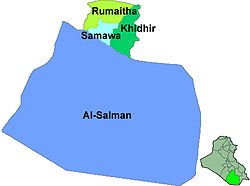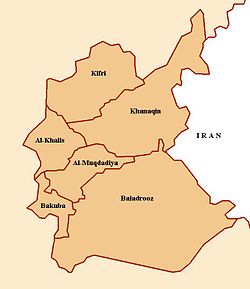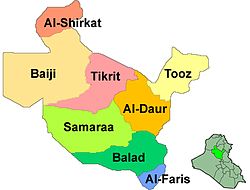| Districts of Iraq اقضية العراق (Arabic) | |
|---|---|
 | |
| Category | Federation |
| Location | |
| Number | 120 |
| Government |
|
| Subdivisions | |
Iraq's 19 governorates are subdivided into 120 districts ( qada ). The district usually bears the same name as the district capital. [1]
Contents
- Districts by Governorate
- Al Anbar Governorate
- Muthanna Governorate
- Qadisiyyah Governorate
- Babil Governorate
- Baghdad Governorate
- Basra Governorate
- Dhi Qar Governorate
- Diyala Governorate
- Karbala Governorate
- Kirkuk Governorate
- Maysan Governorate
- Najaf Governorate
- Nineveh Governorate
- Saladin Governorate
- Wasit Governorate
- Kurdistan Region
- Dohuk Governorate
- Erbil Governorate
- Sulaymaniyah Governorate
- Halabja Governorate
- See also
- References
- Sources
The districts are listed below (with capital in parentheses):











